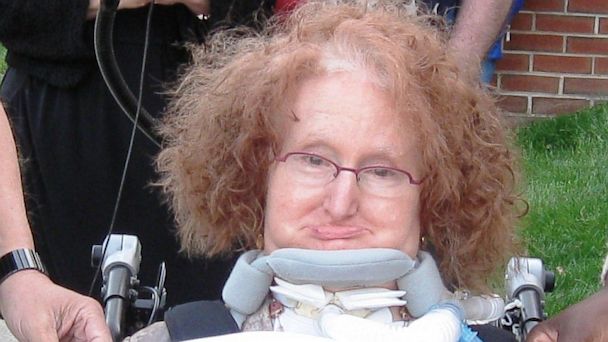Why ALS Can't Stop Me from Dancing

Catherine Wolf has battled ALS, or Lou Gehrig's disease, for the last 18 years. (Credit: Courtesy Catherine Wolf)
By Catherine G. Wolf
I was at a blues concert in north of New York City when I started to feel sorry for myself.
I have ALS, commonly known as Lou Gehrig's disease, so I was self-conscious of the thick drool dripping from my mouth, the fluorescent tube snaking out between my legs. Surely the light from the stage illuminated it for all to see.
But around Ball's second song, I got the urge to dance - something I used to love but have not been able to do for about 16 years.
I was a good dancer before ALS robbed me of my body, starting with my left foot one day in 1996. (I noticed I couldn't flex it in a modern dance class. It just hung downward.)
Now, I was a freaky lump of flaccid flesh.
Then I thought, "Who has more reason and right to act on the urge to dance than me, a quadriplegic, ventilator-dependent 18-year survivor of ALS?"
So I started moving my eyes to the beat of the music, then my head as much as I could. Head and eye dancing was fun! As the ventilator moved in and out, I bopped my chest, perhaps imperceptibly, but I could feel it.
I might look like a mess, but so what? Dancing makes me feel joyful, and that feeling is even more important now with ALS.
Soon, my friend Diane, my college roommate from Tufts University and close friend, came to sit by me and held my hand, moving it to the music. We were dancing!
So here's my message: If you feel self-conscious about what disease, accident, or even age has done to your body, don't! Other people probably aren't looking at you. And if they are and don't like what they see, it's their problem.
Catherine Wolf has lived for 18 years with ALS, a fatal neurodegenerative disease that causes muscles become paralyzed. There is no cure or effective treatment for ALS.
"A Day in the Life" is a series of blogs written by people who are living with medical conditions. This work is the opinion of the writer and not that of ABC News.

Catherine Wolf used to run before she was diagnosed with ALS.